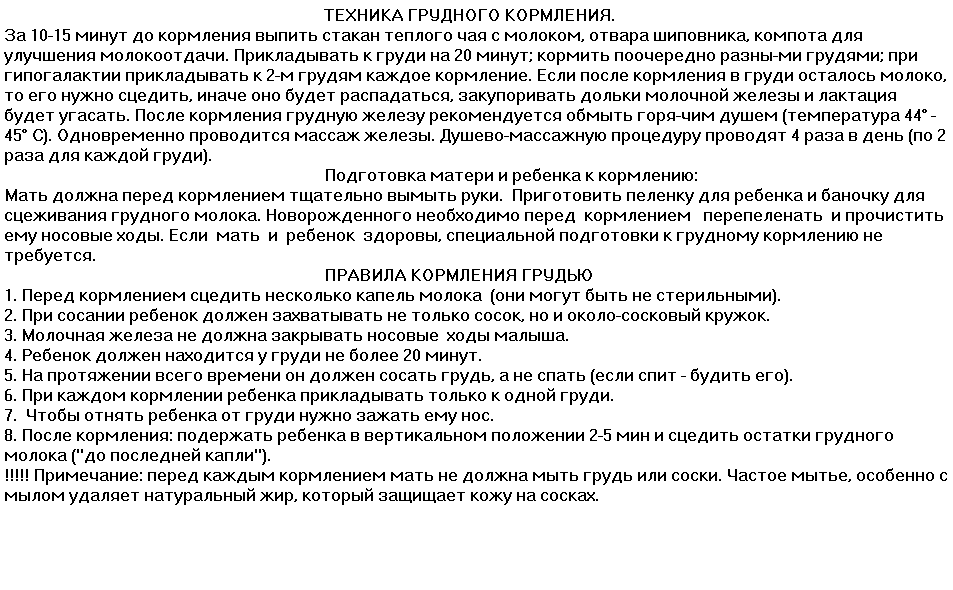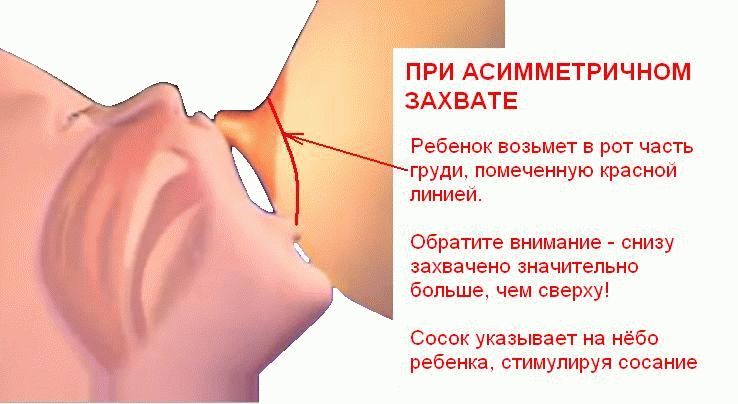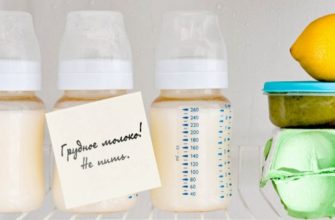Content
The first half of the life of a newborn baby, breast milk is the most complete food. In order for this period to be comfortable for the mother, and the baby only benefit, each inexperienced mother should know basic and most important rules of breastfeeding.
Putting the baby to the chest. Important points:
 The first time a newborn is needed to be applied to the mother’s breast immediately after delivery. The baby should receive colostrum (the first thick yellow milk that appears), as it is the baby’s natural defense against bacteria. It is colostrum that strengthens the immune system of the newborn immediately after birth.
The first time a newborn is needed to be applied to the mother’s breast immediately after delivery. The baby should receive colostrum (the first thick yellow milk that appears), as it is the baby’s natural defense against bacteria. It is colostrum that strengthens the immune system of the newborn immediately after birth.- Before feeding, take a comfortable posture and turn the baby with the whole body toward you.
- Make sure the baby’s head and neck are in a straight line. In this position, milk enters the stomach without obstruction.
- Move the baby’s mouth to the nipple - smelling milk, the baby will open his mouth wide.
- Place the nipple in the baby’s mouth so that only the upper part of the areola is visible (dark circle around the nipple). Ensure that the baby captures the nipple along with the areola. The lower part of the areola should be completely in the baby's mouth.
- If the child is passive and does not open her lips, you can touch the mouth with the lower part of the areola. It is undesirable to do this with a nipple, since the baby can grip its very tip in the mouth. Even a slight sucking of the lower part of the nipple leads to injury.
- After the newborn grabbed the nipple along with the areola, you need to slightly adjust the position of the chest so that it does not interfere with the baby’s breathing.
- If the baby eagerly sucks and begins to choke, you should stop feeding, carefully opening the jaws of the baby with your finger. In your arms, hold the child upright (in a column) until a burp appears.
- Since the nipples are painful at first, it’s not worth taking the breast from the newborn yourself - it’s better to wait until he refuses to suck. But you do not need to endure pain during feeding, which may mean that the baby has misplaced the breast. You should immediately pick up the chest, carefully opening the jaw of the child, and again place the nipple in the mouth with the areola.
Features of modern breastfeeding
- One of the principles is free and unlimited feeding at the first request of the baby. Unlike old methods, this method has a positive effect on the child’s psycho-emotional state and promotes increased lactation in mom. It is advisable to give breasts in any restless condition of the baby, without waiting for his crying. If the baby in the first months requires 10-16 feedings - this is normal!
- Up to six months, the baby needs nightly feeding, as they bring the greatest benefit to the baby, and the mother develops stable lactation.
- The duration of sucking depends only on the child. The last milk in the chest is the fattest and healthiest, therefore it is recommended to give the baby to suck one mammary gland to the very end. The second should be offered only at the next feeding. An exception can only be in case of a lack of breast milk in one breast for full saturation.
- A baby can manage only breast milk up to six months without the introduction of additional nutrition. (when to start feeding)
- The best option for the full development of the child, strengthening the immune system and protecting against viruses is breastfeeding for up to one and a half to two years.
When breastfeeding is not necessary:
- Often wash the mammary glands, as frequent washing removes the protective fat layer from the nipples. The lack of a protective film leads to painful cracks in the nipples and areola. It is enough to take a shower once or twice a day.
- Giving your child water - excess water can reduce appetite and increase flatulence in the baby’s digestive system. A teaspoon of water per day can be given only if the child’s constipation from mother’s fat milk.
- Up to six months, use dummies and drink from the bottle. If the baby is not enough mother’s milk, then supplementary feeding should be given with a spoon or pipette. An infant can confuse breast sucking with a nipple (it is more difficult to suck milk from a breast than from a bottle), and improper sucking can lead to nipple cracks. In addition, the baby can completely abandon breast milk.
- After each feeding, resort to decanting the remaining milk. The exception is stagnation in the chest, engorgement or forced separation of the mother from the baby.
- Weigh the baby often. It is enough to control the weight once every one to two weeks. Frequent weighing can irritate the mother and lead to unnecessary feeding.
- Water the baby with sweet tea. Sweet can harm future teeth, and tea can contribute to iron deficiency anemia.
Video number 1
Video number 2
Breastfeeding is an individual natural process. All children, like mothers, are different. Only with the help of her own experience will any mother herself be able to establish the rules for feeding her infant, relying on the features of her baby and following the recommendations of specialists and mothers who have fed more than one child.











To wean a child from his chest, you need to pinch his nose? Is this generally normal advice ???
The article is not bad, but I don’t pinch my nose when I need to wean it, but slightly press on my chin. And I don’t decantify the breast after each feeding.My mother advised me (although she kept me on the willow), they say express herself, and then as she began to add milk, the guard !!!
He writes a little higher to express to the last drop after each feeding, below they already write that after each feeding it is not necessary to express.
Irina, subtitle “When breastfeeding it is NOT necessary:”…. After each feeding, resort to decanting the remaining milk. The exception is stagnation in the chest, engorgement or forced separation of the mother from the baby.